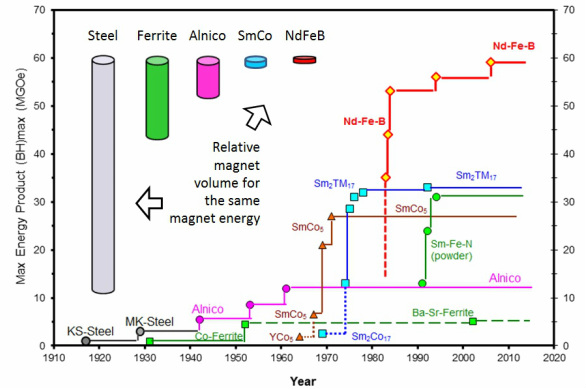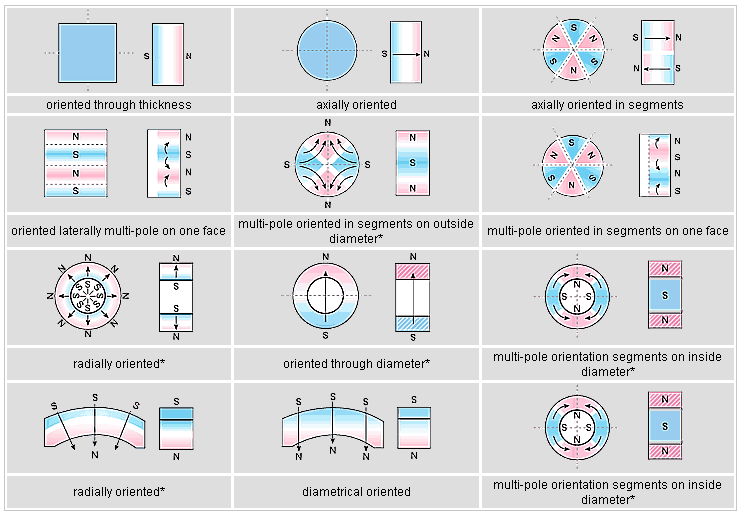Permanent Magnets

Applications
- Speakers / Microphones
- Permanent Magnet Motors (Electric cars, wind turbines)
- Hard-disks
- Magnetic Levitated Trains
- Sensors

History
Loadstone (naturally occuring magnet) is the only type of magnet from 400 BC to 1930s. Then, Steel and AlNiCo and Ferrites are discovered. Today, rare-earth magnets (NdFeB) are the most powerful magnets.

Rare-earth magnets are quite expensive due to rare-earth materials prices. The price of magnets are around 250 TL/kg (£70/kg) in 2014.

Energy content of a PM is the product of B and H (In CGS system it is represented as MGOe: Mega Gauss Oersteds).
Magnetization Directions

B-H Curve of a Magnet
An ideal permanent magnet has a contstant B-H curve with a non-zero remanence flux density.
However, this is not the case for actual permanent magnet materials, and they have finite coercivity (i.e they can be de-magnetized if a large negative magnetic field is applied). Permanent magnets with following properties are desirable:
- Large retentivity (Remanence flux density), which results in a more powerful magnet.
- Large coercivity (point that crosses H axis), which results in a more durable magnet (i.e. it cannot be demagnetized easily).

Large Coercive Force

